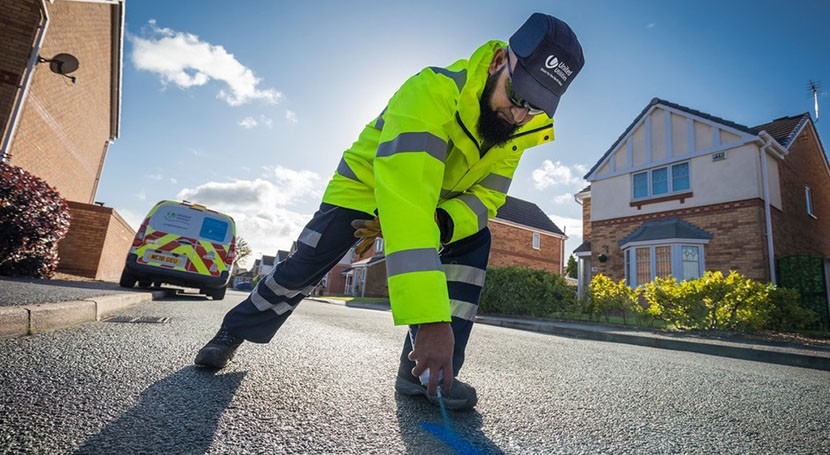Comprehensive Overview to Water Leak Detection for Home Owners and Businesses
Comprehensive Overview to Water Leak Detection for Home Owners and Businesses
Blog Article
Cutting-edge Solutions for Early Detection of Water Leakages in Buildings and Infrastructure
As the integrity of structures and facilities is vital, the challenge of very early discovery of water leaks has actually stimulated innovative options that promise to reinvent the way we secure versus prospective problems. From innovative leakage detection modern technologies to the deployment of IoT sensing units for real-time monitoring, the landscape of leak avoidance is evolving quickly. Artificial intelligence algorithms provide a look right into the future of leak prediction, while thermal imaging provides a non-intrusive approach for pinpointing covert leakages. Automated water circulation evaluation systems are improving how leaks are determined and resolved, leading the way for a positive technique to water leakage discovery. Each of these remedies holds the key to guaranteeing the dependability and long life of our constructed setting, prompting a shift towards a much more sustainable and effective future.
Advanced Leak Detection Technologies
Advanced leak detection technologies, equipped with innovative sensing units and algorithms, play a vital function in quickly determining and pinpointing water leakages in numerous setups. These innovations employ a mix of acoustic, thermal, and electro-magnetic noticing techniques to spot leaks properly. Acoustic sensing units discover the sound of escaping water, permitting exact localization of the leak resource. Thermal imaging identifies temperature level modifications brought on by water leak, supplying one more effective approach for leakage identification. Electromagnetic sensing units can determine changes in electromagnetic areas triggered by water, using yet an additional layer of leak detection capacity.

IoT Sensors for Real-Time Tracking
In the world of modern water leak discovery, the integration of IoT sensors for real-time surveillance stands for a pivotal development in improving aggressive leak detection abilities. These sensing units offer continuous tracking of water supply, offering real-time information on water circulation prices, stress variants, and temperature level adjustments. By leveraging IoT modern technology, these sensing units can spot even the smallest anomalies in water usage patterns, enabling early identification of potential leaks before they intensify into major problems.
IoT sensors transfer data to a centralized platform, where advanced algorithms assess the details and create signals or alerts when abnormalities are detected. This real-time monitoring capability allows home proprietors or center managers to quickly address leaks, decreasing water damages, minimizing repair work expenses, and conserving water sources.
In addition, IoT sensing units can be incorporated with building administration systems, allowing for automated responses to detected leakages, such as closing off water valves or activating pumps to minimize the effect of leaks. Overall, the implementation of IoT sensing units for real-time tracking substantially enhances the performance and efficiency of water leak discovery in structures and infrastructure.
Machine Understanding Algorithms for Leak Prediction

One secret advantage of making use of artificial intelligence for leakage prediction is its ability to continually learn and boost its accuracy over time. As even more data is collected and fed right into the algorithm, it can improve its predictions and adjust to altering conditions, inevitably boosting the reliability of leakage detection systems.
Moreover, artificial intelligence formulas can aid in recognizing refined indicators of leakages that might go undetected by conventional surveillance techniques. water leak detection. By analyzing intricate data collections in real-time, these formulas can supply early warnings and signals, permitting punctual intervention and preventative maintenance to alleviate potential water damages and connected prices
Using Thermal Imaging for Leakage Detection
Thermal imaging technology provides an appealing method for finding water leakages in numerous systems and frameworks. By making use of infrared radiation and temperature variances, thermal imaging cameras can identify hidden leaks that are article source not easily noticeable to the nude eye.
One of the crucial advantages of thermal imaging for leak discovery is its non-intrusive nature. In general, the use of thermal imaging modern technology improves the efficiency and precision of water leak discovery, making it a useful tool for keeping the integrity of structures and frameworks.
Automated Water Flow Evaluation Solutions
How can computerized water flow evaluation systems reinvent the detection and monitoring of leaks in numerous systems and facilities? Automated water flow evaluation systems provide an aggressive method to leak discovery by constantly checking water circulation rates and patterns. By Get the facts developing standard information, these systems can swiftly identify deviations that might indicate a leakage, enabling timely treatment to stop comprehensive damages.
These systems use advanced algorithms to assess real-time data and provide instant informs when abnormalities are discovered, enabling quick activity to be taken. Additionally, automated water flow evaluation systems can be incorporated with structure management systems or IoT platforms, improving total efficiency and allowing remote surveillance capabilities.
Moreover, the information accumulated by these systems can be made use of for anticipating upkeep objectives, aiding to determine prospective powerlessness in the facilities prior to leakages happen. In general, the application of automated water flow analysis systems can considerably improve leak detection and management practices, ultimately leading to cost savings, reduced water wastefulness, and boosted sustainability in structures and framework.

Final Thought
To conclude, the assimilation of innovative leakage detection technologies, IoT sensors, artificial intelligence formulas, thermal imaging, official site and automatic water circulation analysis systems provides ingenious services for early detection of water leaks in structures and framework. These modern technologies make it possible for real-time surveillance, forecast of leaks, and effective detection methods to prevent water damages and wastefulness. Carrying out these options can assist in preserving the stability and sustainability of water systems in various setups.
Report this page